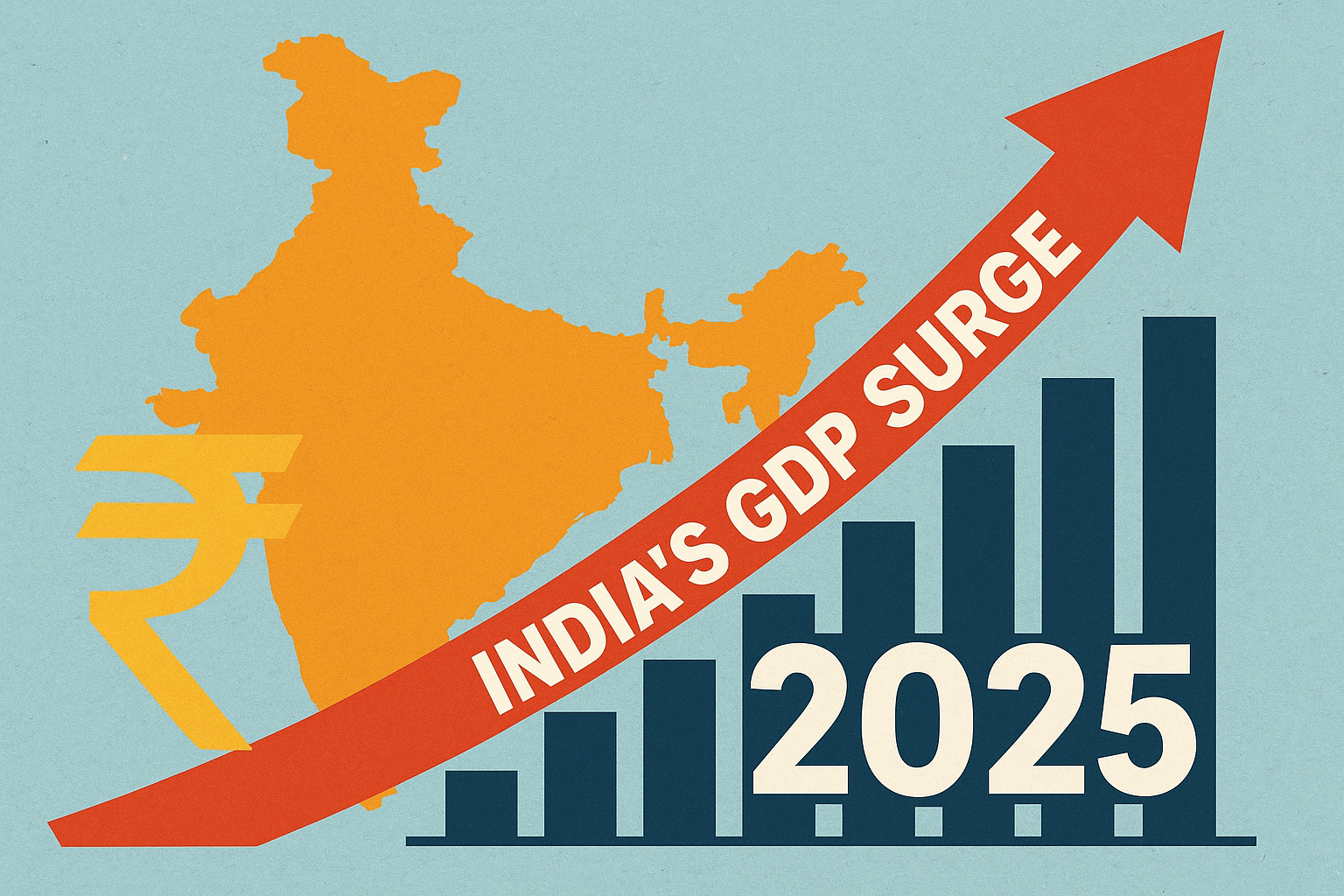Can income now mean wealth later? These 5 investment strategies offer consistent earnings and long-term growth security. Read the blog to learn more!
Waiting years to see your investments pay off is not something any of us want. Nowadays, more and more people are looking for options that offer regular returns, so they can earn along the way, not just at the finish line.
Passive income ideas like dividend stocks, P2P lending, and bond ETFs provide steady income and support the goal of building long-term wealth.
In fact, Indian investors contributed over ₹1.4 lakh crore in net inflows to passive funds in 2024–25 alone, clearly showing how this strategy is gaining strong momentum.
In this blog, we’ll get into five investment options that strike just the right balance between short-term income and steady financial growth. So, without further ado, let’s begin!
5 Smart Investment Options for Consistent Income
A balanced financial strategy includes earning now and building for later. Discussed below are the passive income ideas that help you do both.
- Dividend Stocks
Dividend stocks are equity shares from companies that regularly distribute a portion of their profits to shareholders typically every quarter. This provides a reliable income stream alongside potential capital appreciation, making dividend stocks a favoured choice for investors focused on generating consistent cash flow and building long-term wealth.
When selecting dividend stocks, it is important to look for companies with a proven track record of paying dividends consistently for at least five years.
Such a history indicates financial stability and strong management commitment to shareholder returns.
Additionally, a healthy payout ratio usually falls below 60–70%. This ratio shows how much of the company’s earnings are paid out as dividends, indicating the company can reward shareholders without hurting future growth.
Here are the top five companies with delivering the highest dividend yields as of 4th July, 2025:
| Company | Dividend Yield (%) |
| Taparia Tools | 165.08 |
| Coal India | 6.60 |
| ONCG | 5.00 |
| Alldigi Tech | 4.85 |
| DB Corp Ltd | 4.69 |
Many brokers and companies offer Dividend Reinvestment Plans (DRIPs), which automatically reinvest dividends into purchasing additional shares of the stock.
This mechanism allows investors to benefit from compounding without having to manually reinvest payouts, gradually increasing both the number of shares owned and the future dividend income.
Because dividends are usually paid quarterly or semi-annually, combining them with a cash buffer can help smooth out monthly cash flow needs.
Indian Oil Corporation (IOC) is a prime example of a dividend stock. In the financial year 2023–24, IOC declared dividends of ₹12(₹5 interim + ₹7 final) per share, which translates to a dividend yield of approximately 8.5% based on its ₹140.82 share price. The company’s payout ratio, estimated at around 65–70%, suggests room for further dividend increases, assuming earnings remain stable.
- Trade Commodities
Commodities like gold, oil, and agricultural futures are a popular route for investors in India seeking short-term income opportunities. These instruments often experience price swings due to global trends and domestic demand, allowing traders to potentially profit from daily or weekly market movements.
- Exchanges: The MCX (Multi Commodity Exchange) and NCDEX (National Commodity & Derivatives Exchange) are the two main platforms. MCX dominates metals and energy trading, while NCDEX specializes in agri-commodities.
- Technical Trading: Traders rely heavily on indicators like moving averages, RSI, MACD, and chart patterns to time entries and exits. For instance, a “head-and-shoulders” or support breakout on gold futures can signal a short-term opportunity .
- Risk Management: Because commodity prices can be volatile, MCX gold futures have shown sizable daily moves as maturity nears, using stop-loss orders is standard practice. These orders automatically exit trades if prices swing unfavorably, minimizing losses.
Simpler Option: Commodity SIP Investment Plans
Don’t want to trade futures? A simpler alternative is Commodity SIP (Systematic Investment Plan) allows you to invest a fixed amount or quantity in commodities like gold or silver at regular intervals. Instead of a lump sum, you make small, periodic investments. This approach leverages rupee cost averaging, helping to balance out your purchase price over time and reduce the impact of market volatility.
- High-Yield Savings Accounts & FDs
If market volatility isn’t your comfort zone, high-yield savings accounts and fixed deposits (FDs) can be your next best alternatives for consistent returns. These low-risk instruments generate interest daily, making them a solid choice for building consistent income.
High-yield savings accounts offer flexible withdrawals and higher interest up to 7.5% p.a for balance upto ₹10 lakh , offered usually by private or small finance banks with no withdrawal penalties. Whereas, fixed deposits (FDs) lock in your money for a set term and offer even higher returns of up to 7.8% available from both banks and NBFCs, but charge a penalty (typically 0.5 – 1%) for premature withdrawal.
To understand how this works, let’s look at an example. If you invest ₹5,00,000 in a 5 year FD at 7% per annum.
| FD Investment | Details |
| Investment Amount (Principal) | ₹5,00,000 |
| Interest Rate (Annual) | 7% |
| Tenure | 5 years |
| Total Interest Earned | ₹2,01,523 (compounded quarterly) |
| Approx. Daily Income Equivalent | ₹110.41 (₹2,01,523 ÷ 1825 days) |
| Maturity Amount | ₹7,01,523 |
So, while you don’t receive ₹110 daily in cash, your money grows by that amount daily on average, creating a reliable long-term return.
Some banks allow you to opt for monthly or quarterly interest payouts instead of reinvestment, converting this compound growth into regular cash flow.
- Bond ETFs
When aiming for consistent income, Bond Exchange-Traded Funds (ETFs) offer a blend of yields, liquidity, and portfolio diversification.
ETFs are mutual fund-like products that invest in a basket of bonds ranging from government securities and PSU bonds to corporate debt and track a specific bond index. These ETFs reflect daily changes in bond prices and interest accruals. Investors can buy and sell Bond ETF units on stock exchanges like shares, enjoying high liquidity.
Most Indian Bond ETFs follow a target maturity structure, holding bonds that mature on a specific date, which helps reduce interest rate risk. Returns come either as periodic interest payouts or through growth in Net Asset Value (NAV). With minimum investment amounts, Bond ETFs offer an accessible, steady-income option, suitable for conservative investors.
For example, Bharat Bond ETF. It invested in AAA-rated PSU bonds and followed a target maturity strategy that gave predictable returns with minimal volatility.
- REITS
Real Estate Investment Trusts (REITs) pool investor money to acquire and manage income-generating commercial properties like office parks, warehouses, and shopping malls. SEBI regulations require Indian REITs to distribute at least 90% of their rental income to investors, typically in the form of quarterly dividends.
REIT units are listed on stock exchanges, providing investors the advantage of daily liquidity, a sharp contrast to traditional real estate investments. Popular Indian REITs include Embassy Office Parks REIT, Mindspace Business Parks REIT, and Brookfield India REIT. With low entry barriers and accessible pricing, REITs are a strong choice for investors seeking passive income through real estate exposure.
Both instruments are easy to invest in via demat accounts on NSE or BSE, with minimum entry barriers.
- Digital Assets & P2P Lending
This is the final strategy in our list. One for indivials handy with online platforms for passive income. In India, P2P lending and crypto staking let you lend your money or crypto directly, earning higher returns compared to traditional banks.
What is Crypto Staking
You can earn daily income by locking your cryptocurrencies on platforms that pay interest or rewards. Staking helps support blockchain networks, and in return, you get regular payouts. However, crypto staking is not regulated in India, and carries risks such as market volatility and the inability to access your funds during lock-up periods, which could lead to losses.
What is P2P Lending
This means lending money directly to borrowers through online platforms, bypassing banks. But comes with risks like borrower defaults, no insurance protection, platform shutdowns, and low liquidity. Always research and diversify to reduce these risks.
Conclusion
Earning daily income and building long-term wealth can go hand in hand with the right investment choices. Options like dividend stocks, trading commodities, high-yield FDs, bond ETFs, and digital assets offer steady returns without needing constant attention.
You don’t need to chase risky trends, just focus on consistency and balance. Small, smart steps today can lead to strong financial growth over time. And if you’re unsure where to begin, consulting trading experts can help you make wise, well-informed moves.
- Make in India 2.0: How Manufacturing Is Reshaping Market Sentiment - December 13, 2025
- Real Estate Boom : Why Tier-2 Cities Are Attracting Big Investors - December 12, 2025
- India’s GDP Surge 2025: What the New Growth Numbers Mean for Markets - December 9, 2025





